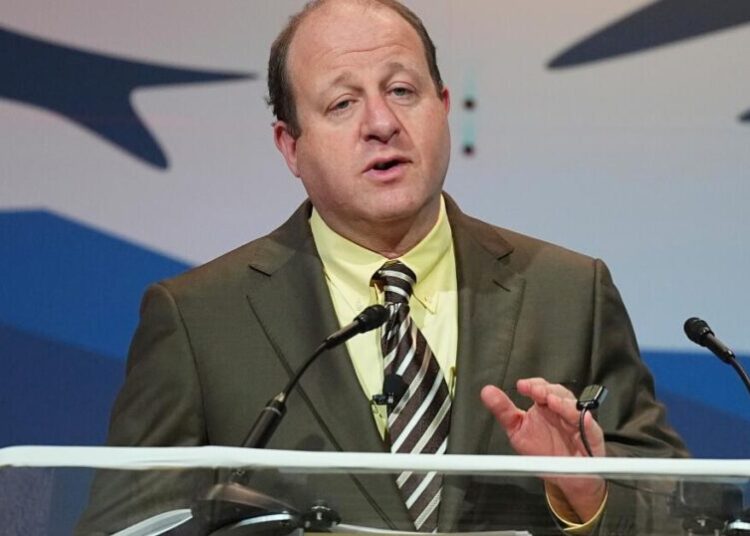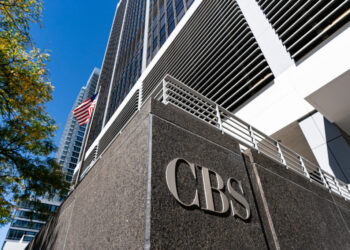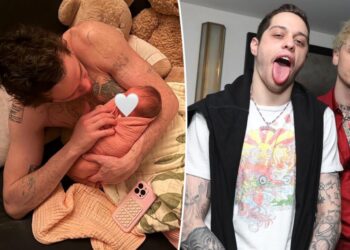HIROSHIMA, Japan — Koko Kondo was returning from the Vatican, where she had sat beside Pope Leo XIV and delivered the closing words at a three-day international meeting about peace, when President Donald Trump announced that he wanted to resume testing of nuclear weapons for the first time in decades.
Kondo, one of the few surviving victims of a nuclear blast, is able to provide a firsthand account of the destruction that collapsed her home and obliterated her community. She has dedicated her life to the task, believing that remembering painful history is the best way to prevent it from repeating itself. And over time, she has come to see the United States and its people as among her primary allies in that endeavor.
A woman whose country went to war against the U.S., whose hometown was annihilated by that war, who for years wanted to meet the co-pilot who dropped the bomb to tell him he was evil, now looks upon Americans with deep affection. She would come to love the U.S., to study at its universities and to consider it a second home.
For Kondo, now 80, inner peace came slowly: through the humiliations of growing up a hibakusha, a survivor of the atomic bomb; by meeting that pilot and forgiving him; by watching her father advocate for victims from the church where he ministered; and, eventually, by living a life of her own advocacy in which bearing witness to past horrors is not a path to retribution or hate but to prevention and forgiveness.
Suddenly, in the era of Trump, those values and that peace were under threat.
“Because of other countries testing programs, I have instructed the Department of War to start testing our Nuclear Weapons on an equal basis,” the president posted on Oct. 29 on Truth Social, the social media company he owns. For Kondo, those bellicose words upended basic pillars of her mission: that the U.S. was a forever partner in nuclear nonproliferation and that respect for history was the way toward progress and peace.
“I’m just so disappointed in the United States president,” she said over the course of nearly three hours of interviews. “People chose that man? What’s happened to you? Yeah, it’s really sad. But we must finish — stop using that.”
Kondo has a fiery personality flowing from her tiny 4-foot-3-inch frame. She has an infectious, bursting laugh but also keeps tissues nearby for tears that inevitably flow as she recounts a life in which she has alternated between how much to remember and how much to try to forget.
She spent much of her life not wanting to be known for one of the world’s most catastrophic events. But eventually she concluded that, with fewer than 100,000 survivors of the bombings still alive, it was vitally important for her to take on the job of reminding the world of it.
“When I was little I said, ‘What’s happened to adults, using that stuff?’” she said. “I’m an adult now.”
Thousands dead. Black rain.
At 8:15 a.m. on Aug. 6, 1945, an American B-29 aircraft named the Enola Gay dropped an atomic bomb over Hiroshima. When the 9,000-pound bomb containing 141 pounds of uranium-235 detonated, it caused a nuclear reaction never seen before in war.
Nearly everything within a one-mile radius was destroyed instantly. Temperatures on the ground reached 7,000 degrees, burning through sturdy buildings and human flesh. The rain that later fell was black and sticky. Those drinking it did not realize it was radioactive.
Tens of thousands were killed that day, and many more died within days of their burns — or years later, when their bodies succumbed to cancers linked to radiation exposure.
The moment the bomb fell, Koko, then just 8 months old, was at her father’s church parsonage about 0.75 miles from the epicenter of the explosion. Her home collapsed, and her mother was knocked unconscious — but Koko stayed in her protective arms.
Koko’s mother eventually dug out of the rubble. With their home on fire, she lifted Koko and ran barefoot to a local park to join other survivors.
Koko’s father, the Rev. Kiyoshi Tanimoto, had been about two miles away, and they later reunited. He became one of six central figures in John Hersey’s seminal work, “Hiroshima,” which appeared as the entire issue of the New Yorker magazine on Aug. 31, 1946, and altered American understanding of the bomb’s devastating aftermath.
Hersey mailed the family a copy of the magazine, which would later help Koko understand exactly what had happened to her family and her community. The memories were painful enough that her mother didn’t give her a firsthand account of that day until Koko was about 40, even though she had preserved the little dress Koko had been wearing.
Koko wasn’t old enough to remember the bombing, but her early childhood was filled with signs of the trauma. At the age of 4 or 5 she noticed that the hands of a girl combing her hair were melted together. She also came to know so many orphans that she questioned whether she, too, may have been adopted.
She recalls feeling a hatred well up inside her at a young age.
“I said, ‘All right, someday I am going to find the people who are on the plane, the Enola Gay,’” she said. “I want to give them a punch or bite or kick. I am going to revenge.”
Within a few years, the opportunity came.
A reckoning on national TV
Roughly 10 years after the bombing, Koko was at home with her mom when the phone rang. Her father was on one of his frequent trips to the U.S. to raise money and awareness for a group of girls known as the Hiroshima Maidens who needed plastic surgery for faces and limbs mutilated by the bomb.
On the phone that day in May 1955, Koko’s mom was instructed to get the family to the United States. Koko later learned that they were being flown to a taping of “This is Your Life,” a series in which guests were lured on the program under false pretenses and then surprised with a journey through their past. Her father had been enticed on to the show with just such a story — an interview request about his current trip and efforts to help the disfigured girls.
Instead, as host Ralph Edwards revealed in the show’s opening moments, the purpose of the appearance was “to retell the story of your life.”
“Through this archway will come many people who have helped shape your destiny, and we hope you’ll have some pleasant moments,” Edwards told his visibly unsettled guest. Turning to the camera, the host added, “And we hope, too, ladies and gentlemen, that you will have a better understanding of what it is to look into the face of atomic power.”
It was not a retelling for Koko, whose life up to that point had been shaped by that day and whose life going forward would be shaped by this one.
Standing backstage as the show unfolded, Koko recognized some of her father’s friends, but there was one unfamiliar man. Her mother hesitated at first to tell her who it was but then relented. It was Capt. Robert Lewis, co-pilot of the Enola Gay.
Koko stared hard at Lewis. This was the man she had come to hate. The man who had inflicted so much damage on her hometown. The man who nearly killed her and her mother. The man she had wanted to confront if given a chance.
“I was just staring at him for all the show. This guy’s the bad one!” she recalled.
When Lewis came to the stage, he recounted in dry detail the flight over Hiroshima. How they saw their target. How they dropped the atomic weapon. How they retreated quickly to avoid the deadly radiation that would so quickly spread below.
“In front of our eyes, the city of Hiroshima disappeared,” he said, as Koko’s father nodded knowingly. He then recounted the words that he wrote in his logbook: “My God, what have we done?”
The two men then shook hands. Lewis did not offer a direct apology, but Koko sensed remorse. She saw a tear on Lewis’s face.
“I was so shocked,” she said, with tears flowing as she recounted the memory. “I heard many stories, but I never heard a monster had tears. That means he’s not a monster. That means he’s same as me. We’re human beings.”
Koko and her younger siblings were brought onstage, squeezed together on a small couch as Edwards asked his television audience for donations for the victims of the bombing. Lewis, standing behind them, made the first one on behalf of his unit. Koko never spoke, but at the end of the show, she was brought forward and asked to wave to the audience, an attempt at a feel-good moment before a commercial break.
“So I just wave,” she said. “And I bow. I did a good job.”
But after the show, she felt terrible. She made her way toward Lewis. She couldn’t manage to say anything, but their hands touched. His large big hand, the one that had been at the controls as the plane flew overhead, reached and squeezed her hand tight.
“That’s the moment I learned I should not hate the enemy. I should hate the war itself,” she said. “That’s how I changed.”
Later reports described Lewis disappearing to a bar before the show, and worrying producers by skipping dress rehearsal and having to be dragged back to the studio and given a cup of coffee to sober up.
As a 10-year-old, Koko found his emotions to be authentic, and she wouldn’t have recognized the smell of alcohol, she said. Much later, she came to understand that his fateful role had damaged him, too.
“I don’t know what kind of drink he had. But if I’m him I would have had a round or two or three cups of sake,” she said. “For him meeting a person from Hiroshima? You have to have something.”
When she learned that Edwards had died in 1983 of a heart attack, she paused.
“Captain,” she thought, “please rest in peace.”
Fleeing the memories
A few years after the bomb, the U.S. established a commission to study the impacts of the radiation on the human body.
Koko went once or twice a year for examinations, which she looked forward to because it usually meant a cookie and some milk. As a junior high school student, however, things changed.
She was instructed to enter an auditorium. She remembers a spotlight shining onto her and a group of men speaking in different languages. She was told to remove her gown as they studied her body.
She felt exposed, humiliated, angry.
“That war — I didn’t start it. Why do I have to do this! I couldn’t stop crying. My tears kept coming down,” she recalled, crying again at the memory. “I don’t remember that day if I ate a cookie or not. I was so furious. I couldn’t tell my parents, especially my father.”
She kept that moment hidden for decades — and was only comforted later, when she learned that the data collected was used to help the children of Chernobyl.
In the moment, she wanted to flee Hiroshima, and she vowed not to tell anyone she was exposed to the atomic bomb. She worried that when others learned about what she had been through, she would have to relive the trauma. She didn’t want the daily reminders of the tragedy.
“It’s always so sad,” she said. “Those, without the war, probably many of them I met, would have had a completely different life. But that one bomb changed each person’s life. I didn’t want to be involved in that kind of situation.”
Within a few years, she was again on a flight to the United States.
She studied for five-and-a-half years — never returning home — and graduated from American University in 1969. She almost never spoke of her past — many friends didn’t know she was a survivor — until one day in class a debate roiled about U.S. involvement in the Vietnam War, and she stated, “Aug. 6, 1945. I was in Hiroshima.” The class was quiet, and the professor asked to see her in his office afterward.
“He said, ‘Thank you. That’s all we had to know from you,’” she recalled. “He appreciated me.”
But the trail of her past, and her history as a survivor of an atomic bomb, followed her.
In her senior year of college, she fell in love with a man and got engaged. The wedding was canceled, however, when the man’s family found out she had been exposed to radiation and worried about her ability to have children.
Facing the past
Hiroshima today is a bustling city with a gleaming train station, roads filled with motorbikes and buses, and shopping areas filled with Patagonia, Gucci, Tiffany and Co. and Louis Vuitton.
At the center lies Peace Memorial Park, with an emotionally raw museum and a number of monuments. A burial mound on the site where corpses were collected and cremated contains the ashes of tens of thousands. A flame of peace is constantly lit. A bell rings every day at 8:15 a.m.
The most prominent monument is the Atomic Bomb Dome — what remains of a grand exhibition hall with a once-distinctive green dome located near the epicenter of the blast. One of the few such structures still standing after the bomb dropped, the ruin is now a UNESCO World Heritage site, its crumbled concrete and gnarled metal a somber reminder of the bomb’s destructive power.
The site is also a marker of resilience, deeply damaged but still standing, a vibrant city rebuilt around it. And like Kondo herself, it is a beacon that illuminates the horror it survived.
“The Atomic Bomb should never be forgotten, even when generations change,” Kiyoshi Tanimoto, Koko’s father, wrote in a pamphlet handed out at Hiroshima Nagarekawa Church, where the cross was constructed out of the rubble from the former building. “We have a mission to pass on our knowledge of it.”
Tanimoto dedicated the remainder of his life to that cause, and he wanted his daughter to join him. For years she resisted, in part because of her complicated feelings about her father and in part because of her conflicted feelings about Hiroshima itself. She often left only to be drawn back.
She married at age 30, and she and her husband returned from Tokyo to Hiroshima in 1976 at the urging of her father. She did not suffer any obvious lingering health issues, although after a miscarriage that her family attributed to the bomb, she and her husband adopted two babies. The couple for many years lived in Miki, a city about 170 miles north of Hiroshima, until he retired, and they returned once more.
Just before her father retired, he gave a final sermon that changed her perspective.
He spoke of the feelings that overcame him after the bomb hit — desperate to reach his family and unable to help suffering people. He described how those emotions later inspired him to do all he could in the aftermath.
“He told me since I was young, ‘I want you to work for world peace.’ I said, ‘No sir, I’m not going to do anything,’” Kondo said. “After some time, I realize how he felt. I cannot do like he did. But yes sir, I can do what I can.”
She has been drawn back to her home — “At the end of my life I want to live in Hiroshima and tell the story of what happened in Hiroshima” — and, like her father, has traveled the world. She has also reunited with Cannon Hersey, the grandson of John Hersey, and they are collaborating on a film designed to remind the world of Hiroshima and serve in some ways as an answer to “Oppenheimer,” the Oscar-winning film about the development of the bomb.
Her father met Albert Einstein and corresponded with Jimmy Carter. Kondo met Soviet President Mikhail Gorbachev and watched Barack Obama describe her willingness to forgive Lewis, the co-pilot.
She hopes, too, that she can meet Trump, who has yet to accept invitations to visit from the mayors of Hiroshima and Nagasaki, where the second atomic bomb dropped three days after Hiroshima in 1945.
“I’m so grateful that everyone who stands on the ground of Hiroshima or Nagasaki never forget,” she said. “That peaceful feeling will grow in each one’s heart. For me, that is important and very precious.”
A White House official pointed to Trump’s previous comments that if other countries are testing nuclear weapons, the U.S. will, as well.
“President Trump has been clear that he would like to see denuclearization,” the official said, speaking on the condition of anonymity to provide background on Trump’s policy approach. “But with other countries accelerating their programs, the President feels this action is appropriate in order to maintain a strong, credible, and effective nuclear deterrent to protect the U.S. Homeland and our national security.”
The official did not indicate whether Trump would travel to Hiroshima or Nagasaki.
Kondo still finds it hard to believe that 80 years after the bomb was dropped, the world still has nuclear weapons, many of which are more powerful than those that destroyed Hiroshima and Nagasaki. At 80 years old herself, she doesn’t know how much longer she can travel the world to share her message but is hoping to visit the U.S. in the coming months.
“I love this world,” Kondo said. “It should be a beautiful world. We’re human beings. We make mistakes. But we have to change it.”
The post A Hiroshima survivor reflects as Trump considers unleashing a new nuclear age appeared first on Washington Post.




